| Revista Umělec 2004/3 >> A User’s Guide to Capitalism | Lista de todas las ediciones | ||||||||||||
|
|||||||||||||
A User’s Guide to CapitalismRevista Umělec 2004/301.03.2004 Jiří Ptáček | Teoría | en cs |
|||||||||||||
|
Thompson, Nato – Sholette, Gregory (ed.): The Interventionists. User’s Manual for the Creative Disruption of Everyday Life. Cambridge 2004.
When you buy a book and find out that you have accidentally purchased an exhibition catalogue, you might be disappointed. You missed the first experience with art. When you later find out that the reading of the catalogue doesn’t have to follow the seeing of it, the relation to it stops being necessary. The publication Interventionists, published for an exhibition of the same name at the Massachusetts Museum of Contermporary Art, belongs among that kind of catalogue. The Interventionists shows us a subject that is significantly based on a helpful and surprising address of the “user” of capitalism. It is understandable that this is why the publication is so distant from the academic form of artistic-theoretical compendium. The undertitle, User’s Manual for the Creative Disruption of Everyday Life, set in gold on a black textile cover, is a double exaggeration. Although the book is graphically outlined in rich colors, it really isn’t a manual about how to destroy the mundane. It simply sums up illustrations of activities with which one can comment on life and political aspects of the urban environment and the informational, economic and scientific-technical development. It shows that you don’t have to oblige the Orwellian reality of institutionalized control and the pressure of political establishment, but it can also engage itself in a net of more-or-less sophisticated attempts to look for unusual perspectives. It is quite obvious that power and capital will be subjected to ridicule, although both can be used as appropriated forms, highlighting its own limits and lacks. An Educated, Well Dressed Nomad Fights for a Street The greater portion of The Interventionists (154 pages) is devoted to profiles of individuals and groups. An attentive reading reveals that the artists featured are mostly Americans. You can count the others on the fingers of one hand. And the essays of the publication editors are mostly linked to the US. Considering the impact of American politics and lifestyle on our planet, and considering the obvious attempt by the authors to exceed this egoism, the conception of The Interventionists is neither national nor patriotic. The authors set four basic spheres: Nomads, Reclaim the Streets, The Experimental University and Ready to Wear. What are they trying to say? Nomads: The urban space creates a row of static social structures and economical interests. But there are whole groups of inhabitants that don’t fit into these structures (the homeless, immigrants). The intervening artists make these unfiled and movable elements visible and they try to reveal and refigure the set structures. One of dozens of these attempts is Krzysztof Wodiczko. Already in the 80s he built simple mobile shelters for the homeless. Recently Michal Rakowitz followed him with his inflatable tents and connected them to the ventilation systems of houses. Since 2000, the German-American group e-Xplo, has been trying to upset the organization of social classes with the help of bus transport between economically different city quarters. And Rubén Ortiz-Torres arranges products which is a domain for the refugees from Mexico to California. The “different, contrasting forms of representation can give us a way, how to entitle this problematic,” he managed this by fine tuning a garden tractor, and sewn logos on religious caps of the sport teams from the USA. Reclaim the Street is about the city as media. Because the city is a public sphere, it deserves the “re-arranging” of its consumerist and political image. The Reverend Billy enters Disney’s toy shop and preaches against consumerism. Billboards become a platform for critical commentary and the streets become places of collective and individual protest against racism or for ecological rights. The African American William Pope walks through Harlem with a white flagpole bound to his underbelly, and supporting a white plush rabbit at its tip. William Pope ironically says, “Member is a work by which I try to own the whiteness, the male whiteness, via my penis.” The city is a frame for the video-performances of Alex Villar. He checks the relationships of the public and the personal, interior and exterior by trying to push himself into places that are accessible for a person, but the form of architecture withholds him from this. He crams himself in the crannies between badly laced houses on a street, crawls on useless railings, etc. The artists in the Ready to Wear section analyze the task of dressing up in everyday activities that exceed the needs of the majority of the population. Either an apron with a hidden pocket for thieves in supermarkets (Yomango, www.yomango.org) or a jacket with fifty hidden pockets (Center for Tactical Magic, www.tacticalmagic.org). In the concluding section entitled The Experimental University, the authors included scientific explorations that “manipulate the visual and space codes in the sense of a critical production” (Nato Thompson). E.g. Atlas Group (www.theatlasgroup.org) gathers materials about Lebanon, particularly the conflict between 1975 – 1991. The archive shows six photographic prints discovered beneath blown-up buildings in Beirut right after the end of the civil war. They are monochromes in different shades of blue. The Atlas Group obtained them from the Lebanese government for analysis. For another project, Secret Talk from 1973, they asked the citizens of Beirut to photograph places of “national, technological, architectonic, cultural, political and economic significance.” The fact that it is mostly archiving of imaginary material, it also contains, according to Nato Thompson, a different view “asking whose this perspective is.” The manner in which artists switch from one subject to another raises the question of perspective in the authors of the book (or exhibition). But even here we can see that the ambition must first open the widest scale, which wouldn’t be interpreted as “greatest hits,” as Thompson says, but as a dynamic sketch, which also has other alternatives. Included and Not Probably the most famous from the represented interventionists is the American formation Critical Art Ensemble. Unfortunately the CAE didn’t become famous because of its action but thanks to a scandal from May 2004. The FBI arrested its member Steve Kurtz, who was suspected of bioterorism. Kurtz is a professor at the Faculty of Arts at the State University of New York’s University in Buffalo and as one of the members of CAE he participates in an experimental research of “social and political consequences of biotechnologies.” E.g. he conducts public tests of food and so tries to alert people to the “invisible” infiltration of genetically modified products into officially very safe fields. What the FBI found in Kurtz’s laboratory were samples of two bacteria, which are also used by the army institutions of the USA. The suspicion was unfounded, but the investigation resulted in a charge for violating the postal law. A wave of criticism of the conduct of the investigative organs was of the opinion that the intervention against Kurtz was an attempt to discredit an unpleasant enemy. Because the deadline for the materials of CAE has run out at the beginning of this year, we won’t be able to read about the case from the FBI. Considering the exceptional attention paid to the CAE the whole event comes out as more and more absurd. The activities of CAE has widened since its founding in 1987. The Interventionists bring just a quick look at the parameters of their activity. The web site (www.critical-art.net) will help the reader to look at some of their work, or they can download their e-book. Unfortunately the editors of The Interventionists were not generous in the amount of web references. This is, in the end, the biggest deficiencies of the publication. An attractive look of the catalogue/book misses therefore its integral part: The row of consequences has its electronic version that expands or explains the used strategies. The internet is a platform where one can intervene according to different rules. For example, the known The Biotic Baking Brigade we learn only from their web site (www.bioticbakingbrigade.org) how carefully they keep up the half-soldiery character of their actions. Including many communiqués or a sentence that we all live in Chiapas. Yet this distinguishes them from many media crazies who, just like BBB, cast cakes at celebrities. BBB mostly hit the representatives of “economic fascism” and their victims were, among others, Bill Gates, Austrian neo-Fascist Hilmar Kabas or the reporter on KVTU Channel 2, Jeniffer Jolly. The web presentation of similarly anonymous “crimes” is important for the dividing of a witless grumble about the conditions from conscious activism. This lack doesn’t remedy the study of Nato Thompson, Gregory G. Sholette and Nicolas Mirzoeff. But not to wrong anyone, we have to admit that all the published essays are comprehensive, exact and understandable. They show us closer, which impulses for which socio-critical discourse meant the economic reforms of the Reagan era, or the hopes in the societal order just after the fall of the Iron curtain. Thompson points not only to different forms of political activism in the USA but also to intellectual relationships with European Situationalists or the importance of the magazines like AdBusters. This magazine is oriented since the 90’s to the revealing of the mechanisms of multinational corporations and political lobbies. It looks for direct visual information and alarmingly plays with the limits of advertisement and art criticism. The final contribution of Nicolas Mirzeoff is aimed at the possible definition of freedom, education and anarchy in a decentralized space, where “future is not an inert utopia but a place where ideas, identities and knowledge are problematized instead of confirmed.” The Manual of Participation The Interventionists is built so that we can penetrate the theme in a different way, and freely cross theory and praxis. It doesn’t overstate the fact that the interventions happen, but it offers a way to our understanding of their philosophically-theoretical concept. The manuals are usually a direction how to handle a subject. The goal is its full mastering. The intention of The Interventionists is to look at the everyday life as a social dynamic, which is “uncontrollable” but that is why it is apt for participation and instigation. Otherwise others dictate it to us.
01.03.2004
Artículos recomendados
|
|||||||||||||
|
04.02.2020 10:17
Letošní 50. ročník Art Basel přilákal celkem 93 000 návštěvníků a sběratelů z 80 zemí světa. 290 prémiových galerií představilo umělecká díla od počátku 20. století až po současnost. Hlavní sektor přehlídky, tradičně v prvním patře výstavního prostoru, představil 232 předních galerií z celého světa nabízející umění nejvyšší kvality. Veletrh ukázal vzestupný trend prodeje prostřednictvím galerií jak soukromým sbírkám, tak i institucím. Kromě hlavního veletrhu stály za návštěvu i ty přidružené: Volta, Liste a Photo Basel, k tomu doprovodné programy a výstavy v místních institucích, které kvalitou daleko přesahují hranice města tj. Kunsthalle Basel, Kunstmuseum, Tinguely muzeum nebo Fondation Beyeler.
|







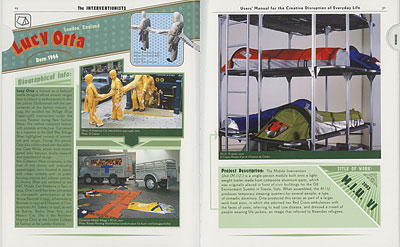






















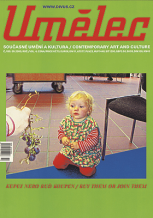
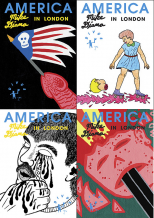
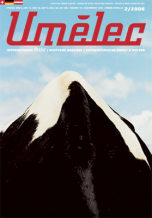
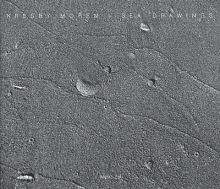


 We Are Rising National Gallery For You! Go to Kyjov by Krásná Lípa no.37.
We Are Rising National Gallery For You! Go to Kyjov by Krásná Lípa no.37.
Comentarios
Actualmente no hay comentariosAgregar nuevo comentario